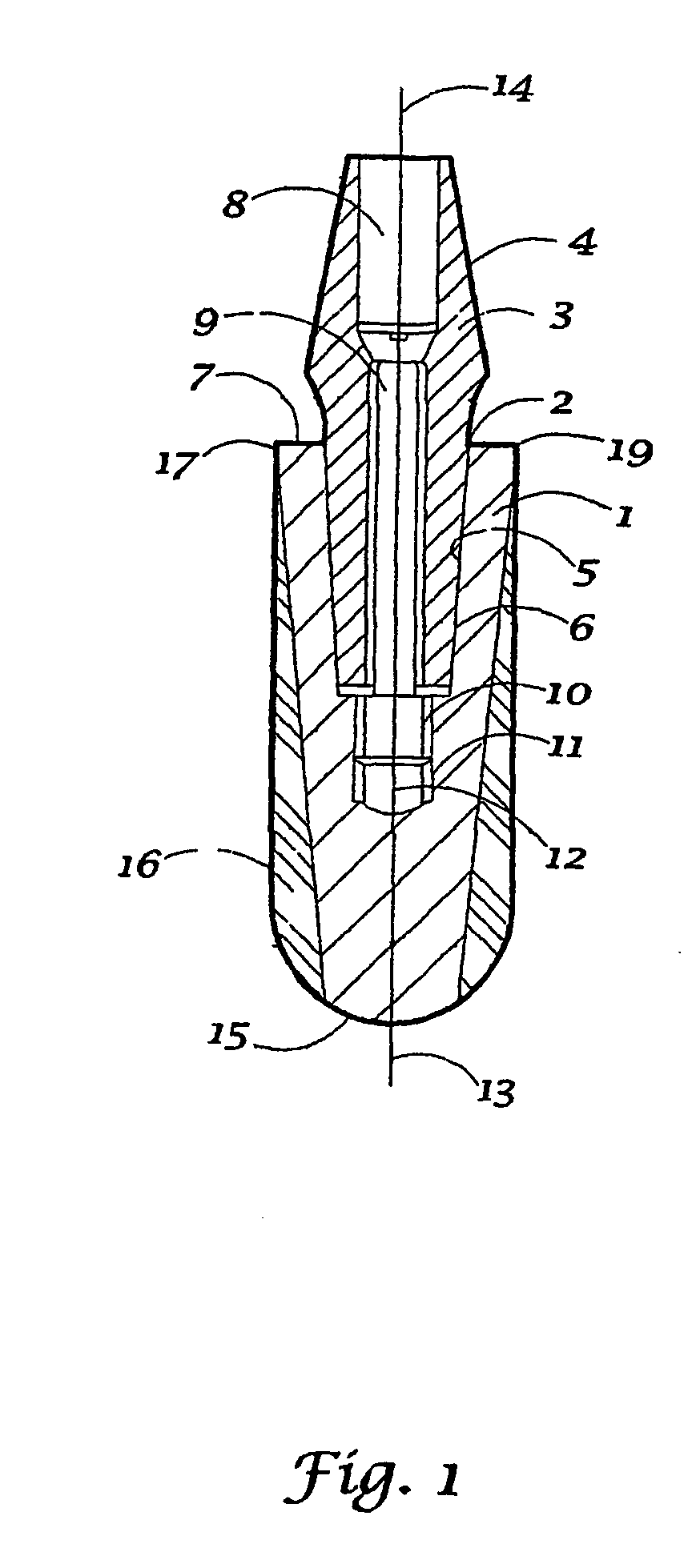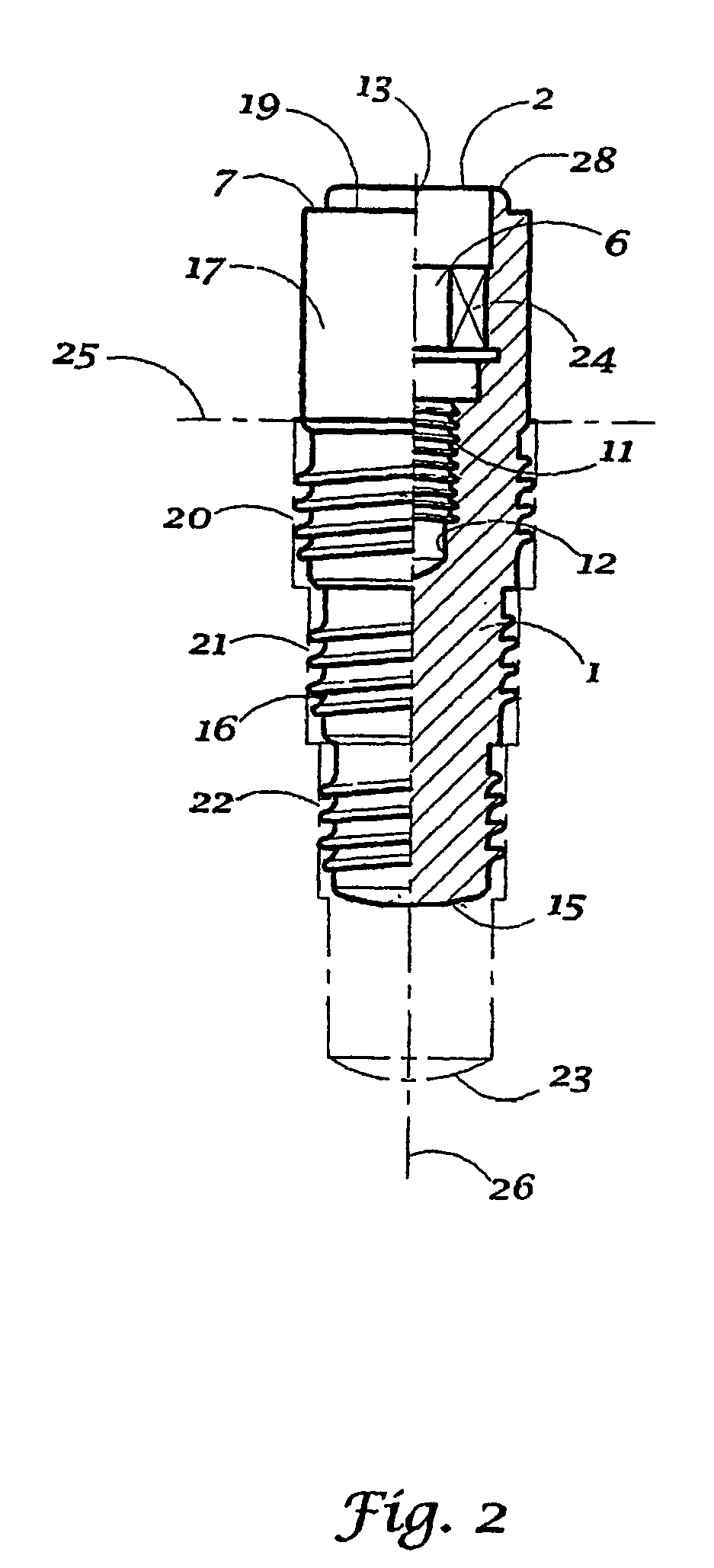Multi part non metal implant
a multi-part, non-metal technology, applied in the field of implants, can solve the problems of inconvenient bone insertion of ceramic implant components, high cost of industrial scale manufacturing, and high machining time of internal structures within sintered ceramic bodies,
- Summary
- Abstract
- Description
- Claims
- Application Information
AI Technical Summary
Benefits of technology
Problems solved by technology
Method used
Image
Examples
Embodiment Construction
[0037] FIGS. 1 to 4 show various embodiments of dental implant components as examples of the invention. Although each of the embodiments has its own advantages in use common features will not be described in detail with each of the embodiments. Therefore, similar features in the different embodiments will be designated with the same reference numbers. Any description of these embodiments is for illustrative purpose and of exemplary nature only. Nothing described or not described in this regard should be construed as a limitation of what is claimed.
[0038] In FIG. 1 a two-phase, two component tooth implant is shown, which is capable of being steplessly positioned in its rotational orientation, including a first implant fixture component 1, having a central cavity opening 2, which fixture 1 is capable of being inserted into a jawbone, and a second implant abutment component 3 which may carry a dental prosthetic superstructure (not shown), like a crown or bridge. The second component 3...
PUM
 Login to View More
Login to View More Abstract
Description
Claims
Application Information
 Login to View More
Login to View More - R&D
- Intellectual Property
- Life Sciences
- Materials
- Tech Scout
- Unparalleled Data Quality
- Higher Quality Content
- 60% Fewer Hallucinations
Browse by: Latest US Patents, China's latest patents, Technical Efficacy Thesaurus, Application Domain, Technology Topic, Popular Technical Reports.
© 2025 PatSnap. All rights reserved.Legal|Privacy policy|Modern Slavery Act Transparency Statement|Sitemap|About US| Contact US: help@patsnap.com



